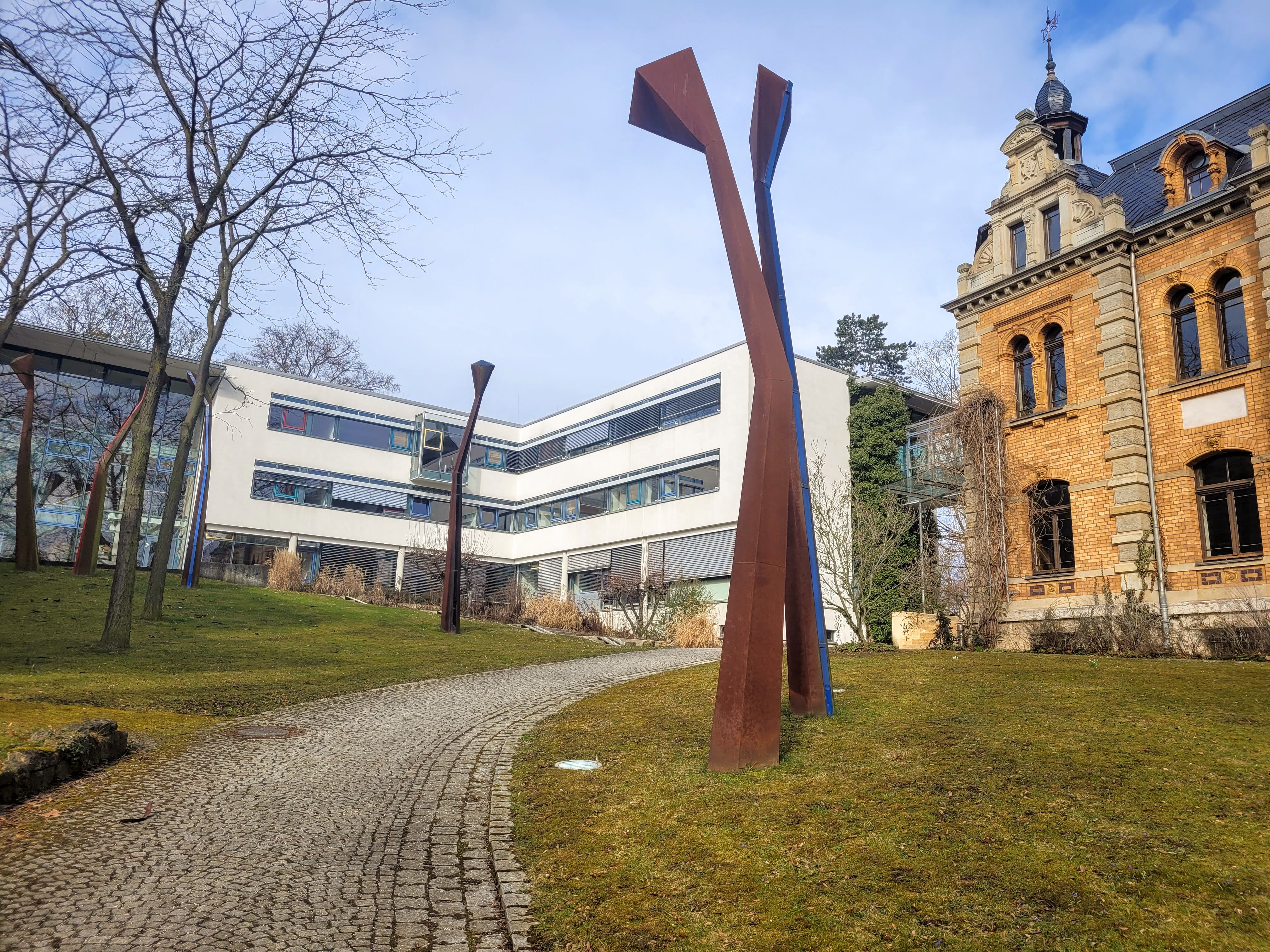From February 28th to March 17th, I had the opportunity to intern at the Archaeolinguistic Research Group of the Max-Planck-Institute for Geoanthropology in Jena.

The project is a continuation of the European Research Council-funded Eurasia3angle project headed by Prof. Dr. Martine Robbeets. It aims to explore the (pre)history of the “Transeurasian” language family through a combination of linguistic, archaeological, and genetic records. I am thankful to be the forerunner in an internship opportunity that will be offered in the future to other students of Linguistics and Archaeology at the JGU Mainz.
The Transeurasian language family, consisting of the Turkic, Mongolic and Tungusic, as well as Japonic and Koreanic language families, has long been controversial, as previous studies have not been able to show a genealogical affiliation of these language families and any similarities (especially those shared by Turkic, Mongolic and Tungusic) were ascribed to prolonged contact between the speakers. However, using the historical comparative method, the Archaeolinguistic Research Group has been able to determine a small set of shared core vocabulary, indicating a common origin. This linguistic evidence has been backed up by archaeological and genetic finds, placing the proto-Transeurasian speaker community at a time depth of ca. 10000 years BP in the Liao River basin in neolithic north-eastern China (Robbeets et al. 2021).
The current focus of the Archaeolinguistic group is the exploration of prehistoric contact phenomena within the branches of Transeurasian. These are reflected in loanwords and substrate interference that can be traced back to a language stage, in which contact with another speaker group persisted. A reduction of geographic areas to known modern and ancient distributions of the speaker groups of these languages makes it possible to determine possible ancient areas of contact, while an analysis of loanwords and the presence of substrate interference provides insight into the nature of interactions between the speaker groups. Synergizing this linguistic evidence with archaeological distributions and ancient genetic admixture enables a detailed understanding of complex processes in the prehistoric past.
As of now, prehistoric contacts between Transeurasian and the Indo-European, Sino-Tibetan and Amuric language families are explored by the PhD students of the project. In addition to revealing useful insights on the interactions between the speakers of these phylae, these efforts provide general information on the interactions between speaker communities with varying adaptations to climate and environment, such as between communities practicing different subsistence strategies (cf. Robbeets 2023).
During my internship at the research group, I had the opportunity to familiarize myself and discuss the methodology and research of the project with its members, as well as establish new connections within the research group, and among the institute staff. In preparation for the internship, I wrote a discussion on the methodology of synergizing linguistics, archaeology, and genetics which I had the opportunity to discuss with members of the research group, as well as members of other projects at the institute. I was always encouraged to ask questions, voice critique, and debate with institute members. I had the impression that my feedback and critique was valued, despite my relatively early career (BA student). Besides providing valuable insight into the research topics of the Archaeolinguistic group, the internship encouraged me to continue investigating archaeolinguistic topics and continue to bring together archaeological and linguistic evidence to reconstruct the distant past.
I am grateful for the financial support provided through the Seed Grant program of the Junge Sprachwissenschaft e.V., as well as to Professor Robbeets for her continuous encouragement and support, along with welcoming me to her project, and organizing my stay at the institute.
For any questions concerning this report and the internship, please contact me at the following address: agorelik@students.uni-mainz.de
References
Robbeets, Martine, Bouckaert, Remco, Conte, Matthew, Savelyev, Alexander, Li, Tao, An, Deog-Im, Shinoda, Ken-ichi et al. (2021). Triangulation supports agricultural spread of the Transeurasian languages. Nature 599, 7886. 616-621.
Robbeets, Martine. (2023). Prehistoric interaction between Transeurasian and non-Transeurasian speakers. In: Martine Robbeets, Mark Hudson (eds.). The expansion and exchange of agropastoralism and languages across Eurasia. London: BAR Press. 25-40.